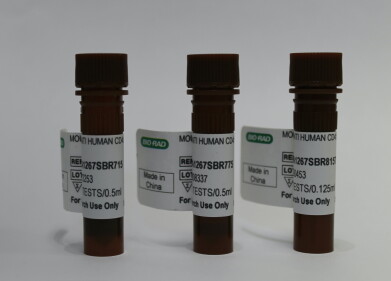Laboratory Products
Temperature Stage used to Understand Protein Crystallisation Growth
Jul 10 2012
Researchers at the Institute for Particle Science and Engineering within the University of Leeds focus on projects that address the engineering science of particulate processes and products. Currently, Research Fellow, Dr Jingjing Liu is using a LTS350 hot-stage system in her experiments to study how protein crystallisation is affected by growing the crystals in a larger quantity, and by changing the cooling rate.
Traditional methods for growing protein crystals are by micro plate sitting-drop crystallisation, or by hanging-drop methods based on vapour diffusion. These methods yield a limited number of crystals but in biological research this is usually enough.
Each of the stages within the LTS range are well-suited to studying protein crystallisation. These versatile heating and freezing stages consist of a large area temperature controlled element with a platinum temperature sensor embedded close to the surface for accurate measurements. The LTS stage has the facility to heat sufficient amounts of liquid within a crucible, which comes with a lid to prevent evaporation. The LTS350 system has now been replaced by the LTS420 which has the same features but has an expanded temperature range of -196°-420°C.
Dr Liu is using HEW lysozyme (Hen Egg-White lysozyme) and is trying to observe the behaviour of protein crystals within a population. To grow a population she uses a quartz crucible to crystallise them inside the LTS350 hot-stage. The number of crystals is proportional to the amount of liquid used within the crucible. The relatively large capacity of the quartz crucible is a distinct benefit in this research as Dr Liu can grow the HEW lysozyme crystals in a useful quantity. In addition the whole process of protein crystallisation can be recorded by a video/camera system. She can also run experiments for over twelve hours, other systems prohibit such long experiments as the liquid can evaporate in the crucible.
Protein crystals have shown significant benefits in the delivery of biopharmaceuticals but the majority are not yet marketed in this way.
Historically the work in this field is, Dr Liu said: "focussed on investigations on crystal growth looking at the molecular and single crystal scales." She noted that this differs from her research as: "my research is focussed on understanding the growth behaviour of the population of crystals which is clearly important to mass crystal growth."
Digital Edition
Lab Asia 31.2 April 2024
April 2024
In This Edition Chromatography Articles - Approaches to troubleshooting an SPE method for the analysis of oligonucleotides (pt i) - High-precision liquid flow processes demand full fluidic c...
View all digital editions
Events
May 05 2024 Seville, Spain
InformEx Zone at CPhl North America
May 07 2024 Pennsylvania, PA, USA
May 14 2024 Oklahoma City, OK, USA
May 15 2024 Birmingham, UK
May 21 2024 Lagos, Nigeria



.jpg)













